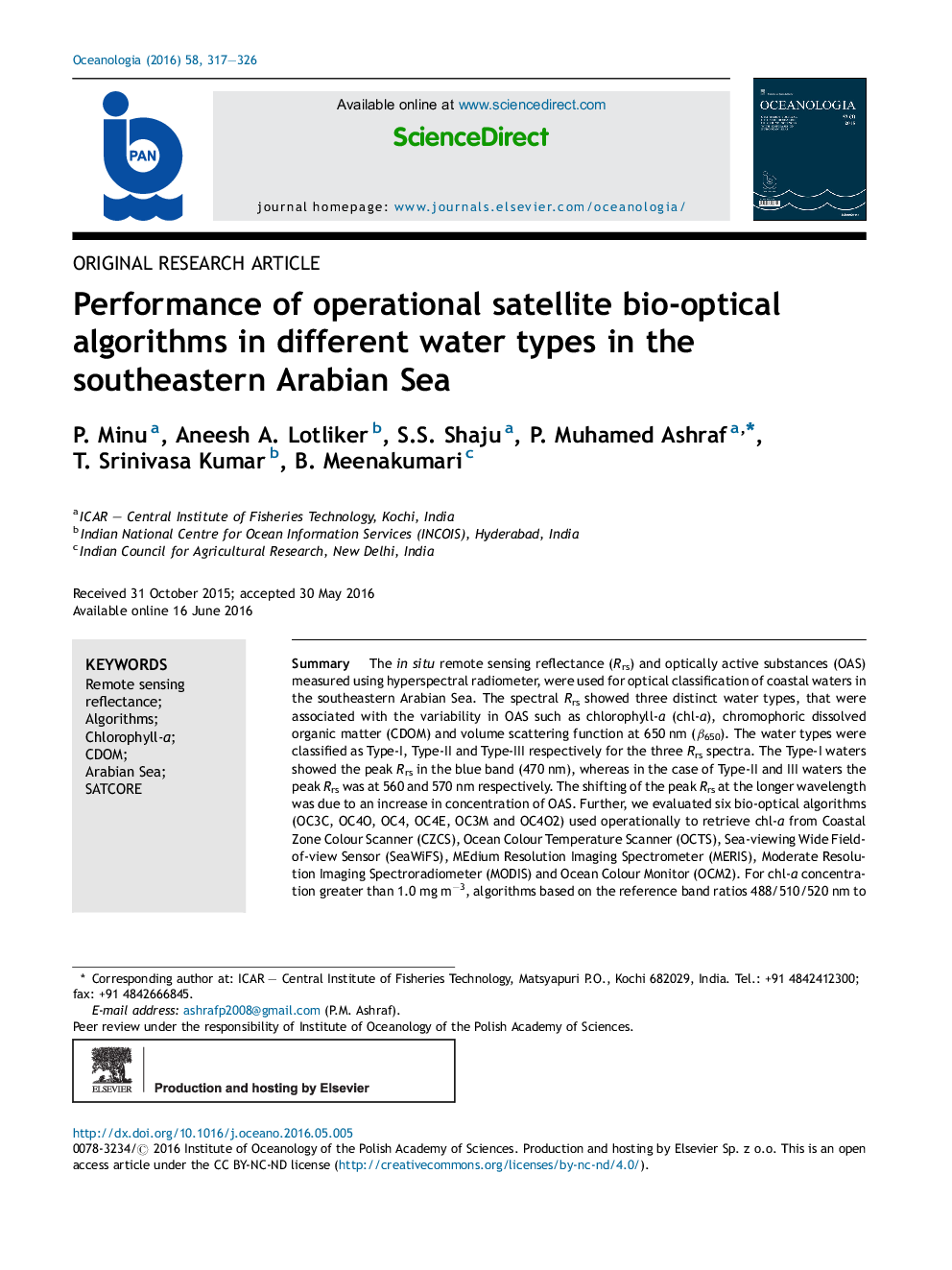| Article ID | Journal | Published Year | Pages | File Type |
|---|---|---|---|---|
| 5519742 | Oceanologia | 2016 | 10 Pages |
SummaryThe in situ remote sensing reflectance (Rrs) and optically active substances (OAS) measured using hyperspectral radiometer, were used for optical classification of coastal waters in the southeastern Arabian Sea. The spectral Rrs showed three distinct water types, that were associated with the variability in OAS such as chlorophyll-a (chl-a), chromophoric dissolved organic matter (CDOM) and volume scattering function at 650 nm (β650). The water types were classified as Type-I, Type-II and Type-III respectively for the three Rrs spectra. The Type-I waters showed the peak Rrs in the blue band (470 nm), whereas in the case of Type-II and III waters the peak Rrs was at 560 and 570 nm respectively. The shifting of the peak Rrs at the longer wavelength was due to an increase in concentration of OAS. Further, we evaluated six bio-optical algorithms (OC3C, OC4O, OC4, OC4E, OC3M and OC4O2) used operationally to retrieve chl-a from Coastal Zone Colour Scanner (CZCS), Ocean Colour Temperature Scanner (OCTS), Sea-viewing Wide Field-of-view Sensor (SeaWiFS), MEdium Resolution Imaging Spectrometer (MERIS), Moderate Resolution Imaging Spectroradiometer (MODIS) and Ocean Colour Monitor (OCM2). For chl-a concentration greater than 1.0 mg mâ3, algorithms based on the reference band ratios 488/510/520 nm to 547/550/555/560/565 nm have to be considered. The assessment of algorithms showed better performance of OC3M and OC4. All the algorithms exhibited better performance in Type-I waters. However, the performance was poor in Type-II and Type-III waters which could be attributed to the significant co-variance of chl-a with CDOM.
